If you own an automatic return pool table and the balls keep getting stuck in the chute, there might be a problem with your table's ball return system. How do you fix this? We've researched and found some of the best advice to resolve this issue. Let's get right into the solutions!
To fix your ball return system, there are two things you can do:
- Remove the pool table slate to see into the channels and remove the blockage.
- See if there are any broken components and call a professional pool table service near you to fix or replace them.
Read below for more details on how to remove the blockage yourself. We'll also give you some insights into how a ball return system works. With that said, let's dive into this article!
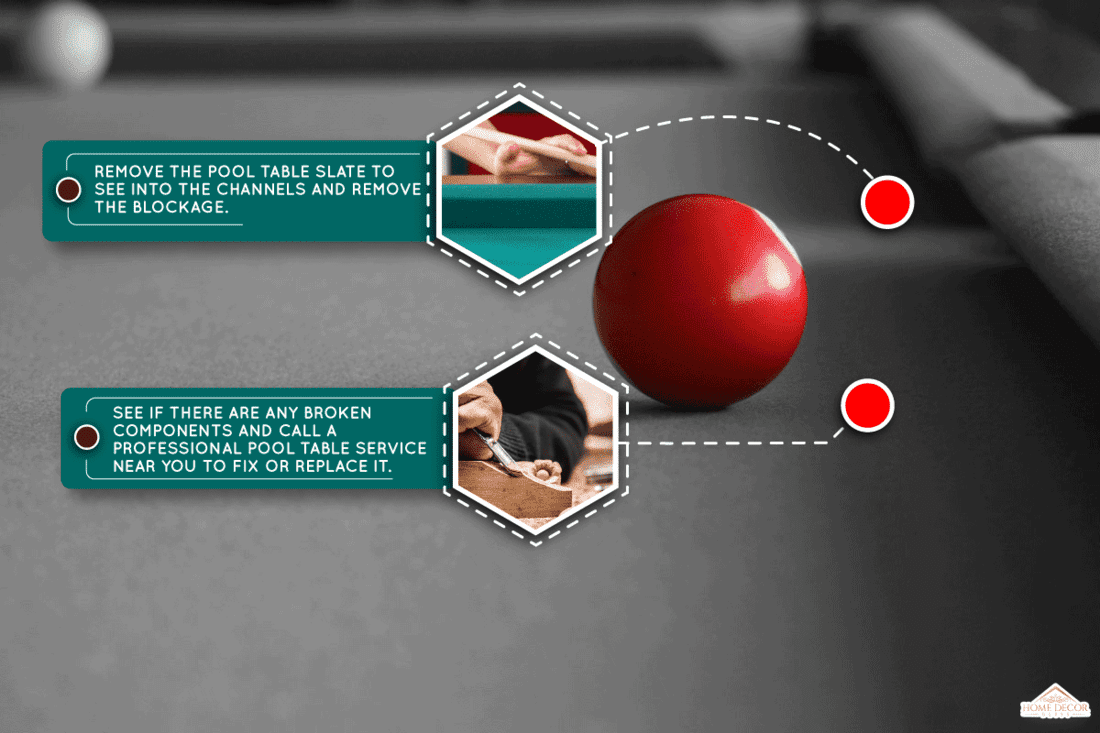
How To Fix A Pool Table Ball Return System
The most common reason why a pool ball table will not return is a blockage. Most likely, an object was dropped into the chute and stuck somewhere in the channels.
The other reason may be a broken component in the ball return mechanism. This can be more complicated and require the help of a professional pool table repair service.
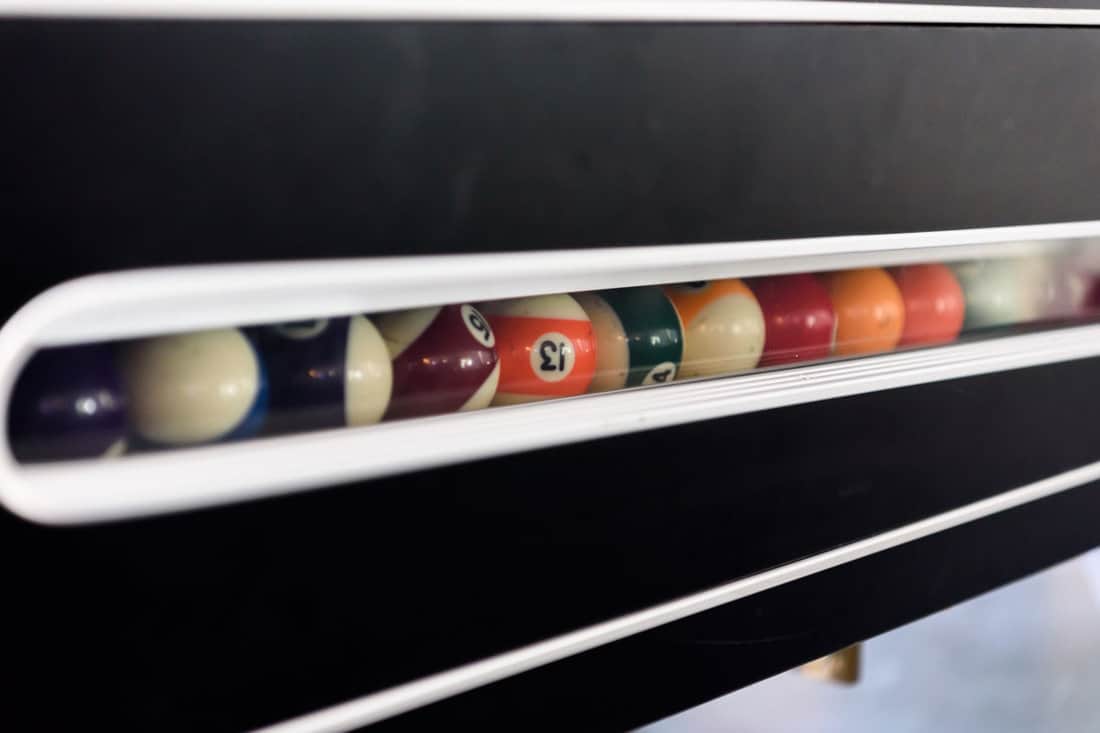
We may include affiliate links and curated AI content to highlight top design styles.
Take note that this problem happens only to automatic return pool tables and not to pocket billiard tables.
Check out this Mizerak Automatic Ball Return pool table on Amazon.
To fix a blocked pool table ball return, here's what to do:
- Remove the pool table slate
- Look into the mechanism and search for the object causing the blockage.
- If you don't see anything blocking the channels, check if there's a broken component.
- Call a professional pool table repair service if the problem seems more complicated.
Removing the slate is always the best way to go because it will give you a good view and access to the entire mechanism and assess what's wrong.
However, removing the slate is not easy and will be the most significant part of the job.
The slate is heavy, around 300 pounds, and the entire pool table can be up to 1,000 pounds. It would require the help of a second or third person to handle it properly.
Here's a picture of the inside of a pool table slate without the felt cover:
How To Remove A Pool Table Slate
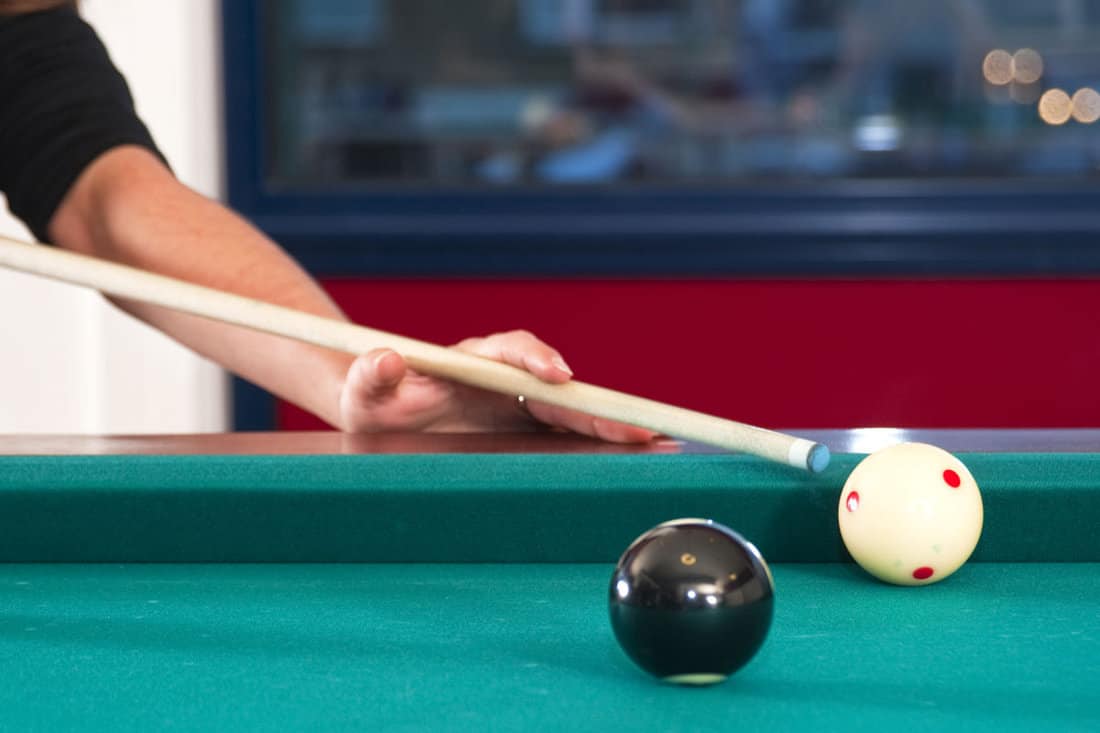
There are different types of automatic return pool tables, and the removal process can be different in some aspects depending on what kind or brand you have.
Check out Fat Cat's 7-foot table in blue with automatic ball return on Amazon.
Using A Slate Lifter
If you're planning to remove the slate on your own, you need the help of a special tool called a slate lifter. It's specifically designed to remove a pool table slate for a one-person job.
Check out this video below on how to use it:
Manual Removal
If you have people helping you, you can remove the entire slate to gain better access to the mechanism underneath. To do this, here are the general steps:
- Remove the ball return tray.
- Remove the top rail by releasing the latches on various corners of the table.
- Remove the slate slowly, holding it on the pocket corner cutouts.
- Slowly lift the late and let it lean vertically on a wall, ensuring it won't slip and slide down. Don't lay it flat on the ground because it will be harder to pick it up again because of the weight.
Be careful not to drop and break the slate; otherwise, it will be useless. The slate's material is fragile, and sitting on it is not recommended.
After removal, you will now have a full view of the ball return channel and check for any obstructions.
If you're having a hard time visualizing the parts mentioned in the above instructions, here's a helpful diagram:
You can check out this instructional video if you want more visual instruction. It's a bit long, but if you want to skip the slate removal process, you can go to 3:51 of this video below.
Broken Components
If you don't see any obstruction but the ball return still won't work, you need to do a visual check on whether there are broken components that needs repair or replacement.
Drop the ball in one of the pockets and see how it runs on the channel. There might be a problem with one of the gutters, and you can adjust it through leveling.
You can call a professional pool table repair service near you for a more thorough assessment.
How Does A Pool Table Ball Return Work?
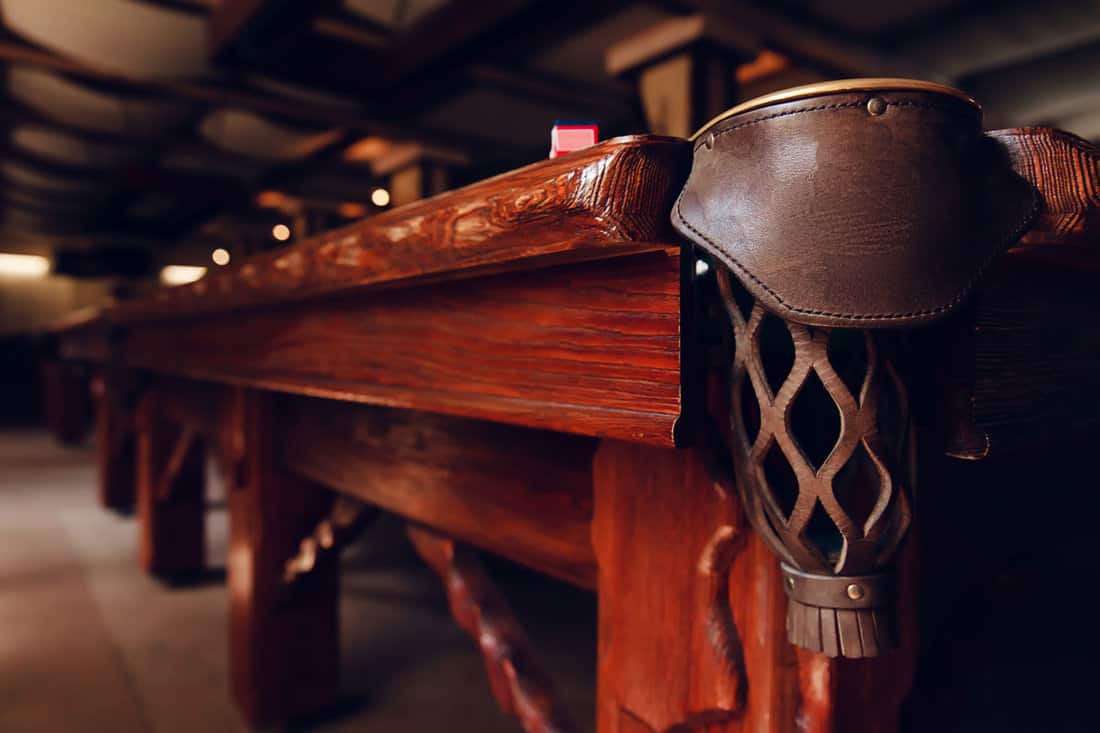
There are two types of pool tables—one with a ball return system and one with drop pockets.
With the ball return system, when the ball drops into the pockets, the ball runs through the channels and appears in the ball return tray.
Here's a video with a simple comparison and explanation of how a pool table with ball return works.
In some pool tables, particularly the coin-operated ones, the cue ball (white ball) has a different ball return tray than the other colored balls.
One of the common questions about this is how the ball return system separates the white ball from the rest of the balls.
Many people assume that the cue ball is either smaller or bigger than the rest of the balls and drops through a separate hole in the channels. However, this is not the case.
The cue ball has a thin layer of iron inside it, and the pool table has a strong magnet in one area of the gutter. As the cue ball rolls and passes through the magnet, it is drawn into a separate panel and released in a separate tray.
You can check out this video below on how it works below:
How Long Do Pool Tables Usually Last?
With proper care and maintenance, a slate pool table can last more than 50 years, while a medium-density fiberboard (MDF), also known as a wood bed table, can last for ten years or less.
Slate pool tables are a lot more expensive, but they can last for decades with proper care and maintenance. It can be something you can hand down to your grandkids.
Pool Table Maintenance
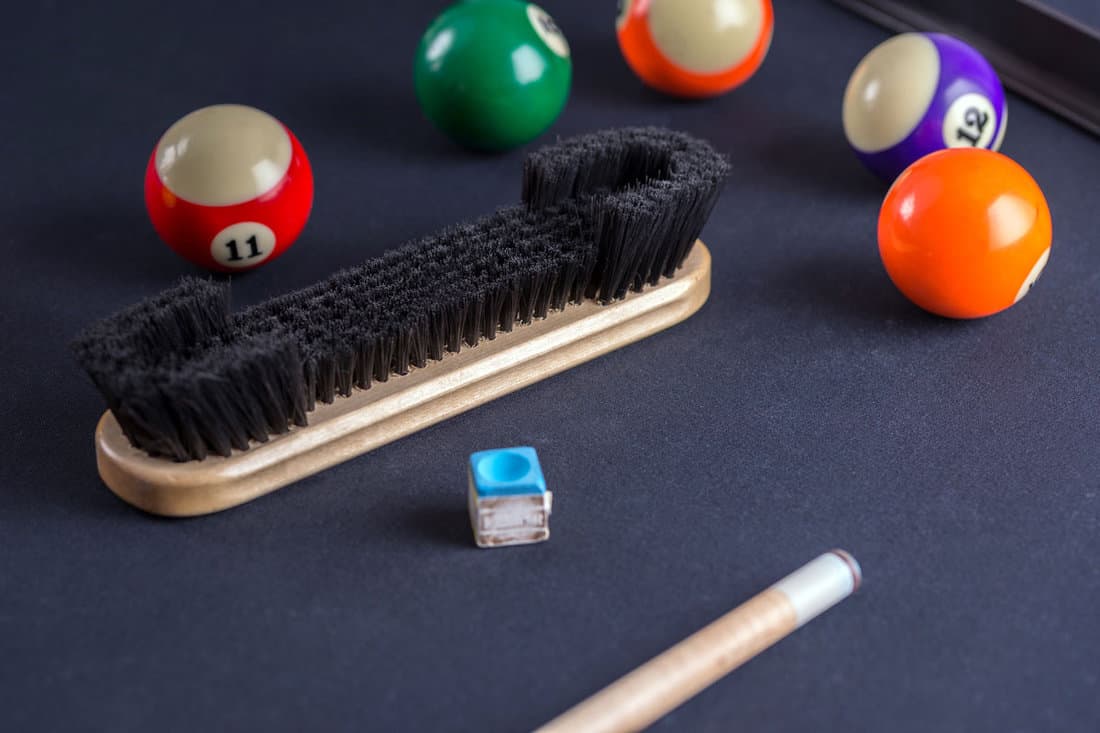
Proper maintenance includes placing it in a low moisture area so the material won't contract during cold temperatures.
Pool tables can ideally be placed in an outdoor setting, but this depends mainly on where you live and the humidity level in your area. Leaving it in undesirable temperatures can drastically lessen its lifespan.
To prolong its lifespan, it's more prudent to place it in a temperature-controlled environment.
It's also essential to change the cloth or felt every few years, preferably every three years, with frequent use. You'll know the felt needs replacement if it already feels bristly, and you can pick up lint on the table.
Here are some other ways to keep pool tables in tip-top shape:
- Clean surfaces using a soft cloth slightly damp with water
- Always cover the table when not in use
- Brush and clean the chalk on the table after every use
- An occasional vacuuming can help lift stubborn dirt out
- Clean the balls with a gentle detergent and water
- Don't chalk your cue stick directly over the table to avoid chalk buildup on the felt
- Do not smoke or eat while using the table to prevent any damage
- Do not sit, lie down, or stand on top of the pool table to avoid misaligning the slate
One crucial thing to note if you want to prolong its life is never move a pool table yourself. Because of the leveling and precision requirements, it's important to let professionals move.
Get this complete set of pool table cleaning brush kits on Amazon.
To Finish
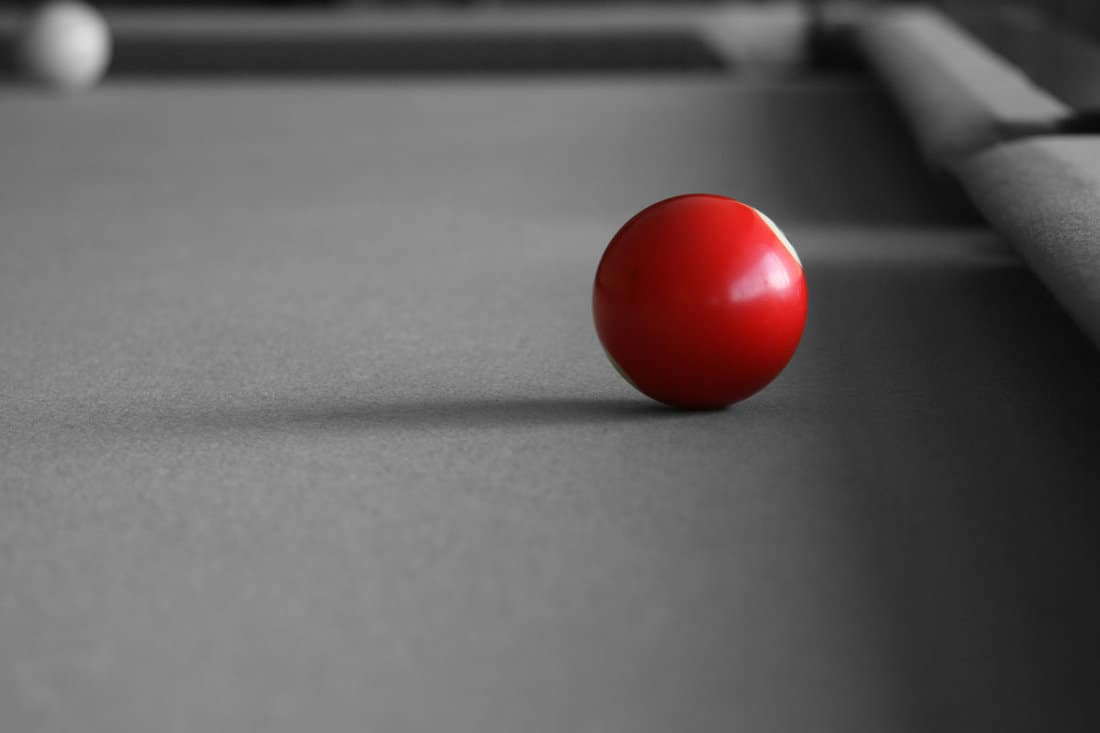
The best way to fix a pool table's ball return is to remove the slate and look into the mechanisms underneath for any obstruction or broken components.
If you can't identify the problem, it's best to have a professional pool table service look into it.
Thank you very much for reading through, and we hope we were able to help you resolve the problem with your pool table's ball return system.
For more information on pool tables, check out the other articles below:
Should You Tip Pool Table Installers?






